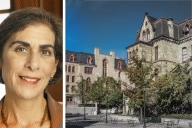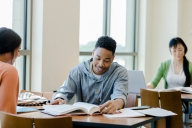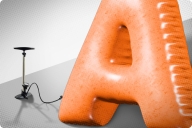You have /5 articles left.
Sign up for a free account or log in.
CHICAGO -- Liberal education has many critics these day, so how can its purveyors and supporters better defend it? That was the subtext of several panels at a conference on whether liberal education needs saving Friday at the University of Chicago.
For Julie Reuben, the Charles Warren Professor of Education at Harvard University, liberal education doesn’t need saving as much as it needs “reviving,” starting with a redefining of terms.
Redefining Terms
Like several conference attendees, Reuben commented on how liberal arts are often “hazily” described as synonymous with the humanities. And a liberal education, she said -- while commonly understood as “timeless” -- has over time in the U.S. meant different things to different people: foregrounded in the ancient languages, math and philosophy; centered on open inquiry; nonvocational and residential; or focused on certain pedagogical practices or disciplines.
All that is confusing, but not necessarily bad -- and perhaps even hopeful, Reuben said. “What it means is that the liberal education has been in crisis in earlier moments in history and people in education have managed to come together and revive it by giving it a new, semicoherent sense of it and what it means and what the rationale for it is.”
Reuben added, “I believe we’re at another one of those historical moments where we need to revive [it] through a form of redefinition and clarification.”
As in previous points in history, there are particular challenges to that end, Reuben said during a panel on liberal education in the modern university. Today, it’s primarily institutional structure: departmental silos, hyperspecialization and reward systems that exacerbate both, she said. That “doesn’t help us look up and engage in public conversations and engage in conversations across universities.”
There’s also a new push for utility of knowledge, including by funders who largely define it in technocratic terms or by limited goals about how to solve social problems, she said. Administrators often respond to those demands in ways that prioritize the long-term financial future of an institution, Reuben added -- not necessarily immediate, academic ones.
Most sympathetically, students and their families also share these concerns in relation to their personal financial futures, she said. But such discussions also create rifts between disciplines and among faculty members about what knowledge is useful in the modern world, in turn driving other divisions.
Touching on more common criticisms of liberal education, Reuben also said that recent intellectual trends and the critique of the idea of a canon pose additional challenges. She didn’t endorse the idea of a strict canon, but said that liberal educators need to move beyond “tearing down” intellectual traditions and think about what texts and works of art students should be wrestling with to understand the modern world.
A New (Old) Model
With that in mind, Reuben proposed that the aim of a contemporary liberal education should be to orient students to the world they live in and help them both envision and build the lives they want to live. Such an education should be humbling, she added, and include exposure to contradiction and ambiguity.
Reuben also proposed certain core courses that might serve that purpose: one on humans’ impact on the planet, inclusive of cultural and natural and social scientific perspectives; one on the origins and impact of European colonialism across the globe in terms of power, economies and culture; and one organized around the concept of the self, including philosophical, artistic and biological and psychological inquiry. She called her ideas “humble,” but also proof that educators should be “afraid” to begin such conversations.
Lorraine Daston, director of the Max Planck Institute for the History of Science in Berlin and a regular visiting professor in the Committee on Social Thought at Chicago, elaborated on Reuben’s point about the elision of the humanities and liberal arts during a panel on the history of liberal education. She said that as a historian of science, she’s often called upon to “mediate” between the natural sciences and humanities and social sciences, between which “the divorce rate is higher than the population at large.” Yet they simply cannot exist without each other, she said.
Daston called it self-evident that liberal education needs a scientific and mathematical component “now more than ever in the scientific and technology-saturated society in which we live, in order to prepare our free citizens to think, debate and act in a democratic society.” And indeed, as she and other speakers pointed out, the liberal arts from their inception have included math and some sciences. Equally important but perhaps more counterintuitive, Daston added, the sciences also need the liberal arts more than ever now, to provide students an “orientation.”
For example, she said, one only need mention the term “climate change” to discern how complex the problems facing modern scientists are. Yet scientists feel intensely constrained by more immediately practical concerns, such as securing external funding and improving their citation metrics; a broader, more liberal approach to science education might help relieve some of these pressures and attract more, brighter students to study them, Daston said.
Some of Reuben’s and Daston’s sentiments were shared by conference co-organizer Aviva Rothman, an assistant professor of social sciences at Chicago, who said a liberal education can leave students “unmoored” and uncertain, but also teach them to move beyond that fear and work to improve the world in ways they see fit. Observing that process in action -- and teaching students to read “sympathetically” as well as critically -- is the overall “joy” of the liberal educator, she said.
Rothman also said that educators tend to talk about the value of a liberal education in two registers: aspirational and practical, and that the conversations don’t have to be so separate. Several other speakers encouraged liberal educators not to shy away from meaningful discussions about the practical application of a liberal education -- meaning that it's all right to tell students it will help them in their careers as well as in their intellectual lives.
Getting More Practical
This may be especially important for students of color and first-generation students, said Micere Keels, an associate professor of comparative human development at Chicago, during a panel on the role of liberal education in democracy and social justice. Keels is studying a group of such students who went into college with the academic preparation and readiness for it, in part to see why those who don’t end up graduating leave. She said preliminary research suggests that students have intense anxiety about the value of a four-year degree that affects their ability to focus on their work because they simply haven’t seen it pay off before.
Educators could help these students by assuring them -- in part by helping them identify concrete pathways to jobs -- that pursuing the “famous life of the mind” as an undergraduate is worth the risk in both intrinsic and more practical rewards, Keels said.
Sara Goldrick-Rab, a professor of education policy studies and sociology at the University of Wisconsin at Madison, also pointed out during the democracy panel that some of the country’s most prestigious and well-endowed institutions have relatively small populations of Pell Grant recipients. In short, she said, further conversations about liberal education are incomplete without talking about who can afford to have it.
Beyond the Faculty
While many conversations about the liberal arts take place only among faculty members, Chicago’s conference included thoughts from administrators, as well. Alison Byerly, president of Lafayette College in Pennsylvania, said her role often demands that she act as a “salesperson” for liberal education, and that it doesn’t have to stand in opposition to her support for it as an academic. Like other speakers, she argued that reviving liberal education might mean stressing its intrinsic benefits as well as its potential for return on investment.
“It’s important to recognize that students are really borrowing and struggling” to come to college for a liberal education, and describing the liberal arts as useful “is not selling them short,” she said. In fact, she added, selling a liberal education as proudly, fundamentally useless has hurt its cause in conversations with the outside world.
In her own conversations with parents, students and donors, Byerly said she begins on common ground: that the pace of change today is rapid. From there, she said, the best argument for a liberal education is one she believes in -- that it’s the “best possible preparation" for change and reinventing oneself.
Does the role of the admissions office also have a place in such conversations? Theodore O’Neill, former dean of college admissions at Chicago, said yes. Colleges and universities do a disservice to liberal education by trying to attract students to apply with gimmicky gifts (pizza cutters elicited lots of laughter) and other incentives that have nothing to do with the goals of a liberal education, he said.
More applications and more demands about who gets in and why and under what discounts, if any, mean less time and latitude for admissions officers to really talk about whom they’re accepting or rejecting. Students are also “fulfilled” rather than given honest answers about their intended courses of study and whether the institution is otherwise a good fit. Such a “frenzy” can only impact education once students are on campus, O’Neill said.
“We sell what we think they want or what they’re told they want: choice, hands-on learning, preparation for careers, internships, study abroad, but not what we think would be best for them, or what is the best we can do for them,” he said. “Who are they, then, when they get to us? Have they been prepared to be liberal arts students?”









